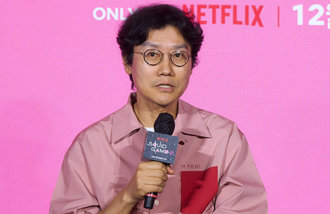A Twin Darani-Gyeong Scroll Is Rediscovered
A Twin Darani-Gyeong Scroll Is Rediscovered
Posted March. 26, 2007 07:13,
According to reports, another scroll print exists with the same shape as Koreas 126th national treasure, the Mugu jeonggwang dae darani-gyeong that was created in the eighth century and which is known as the worlds oldest woodblock printing. The identical rolled paper scroll was excavated at Seokga Towers, Bulguk Temple, Gyeongju in 1966. Since then, it has been unknown to the public. Thus, researchers could not conduct any studies on the relic.
Park Ji-seon, professor of the cultural properties protection department at Yong In University, and an expert on paper cultural properties protection, said, In 1989, when we took part in preserving remains unearthed from Seokga Towers at the National Museum of Korea, we found a thread-wound roll of papers. He continued, Its size and shape were equivalent to those of our 126th national treasure.
Analysts say that this roll of paper could be the remains of an eighth century artifact because according to a recent deciphering of Seokga Tower writing (a memo on mending the tower in 1024), constructors installed two copies of the printing in building the tower. Park said, The newly-found Darani Gyeong stayed less blemished than the 126th national treasure, and added, It has a high probability of being another Darani Gyeong.
Ahn Seung-joon, special researcher of the Academy of Korean Studies, who decoded the note, predicted, On paper, it is certain that there is another rolled paper scroll with Darani Gyeong or bamboo printing. Under the circumstances, the remains were found along with the present Darani Gyeong in 1966.
If researchers begin a study on the relic, and it is confirmed to be an eighth century woodblock printing, Korea will have another example of the worlds oldest woodblock printing. The scroll paper has been under guard in a depository of the National Museum of Korea for 41 years, since it was found in 1966. This was because, at the time, it was unnoticed by researchers; even in 1989, knowledge concerning where the relic was excavated was scarce. Even the report of preserving the remains of Seokga Towers did not explain the remains. There was only a photo attached.
zeitung@donga.com







